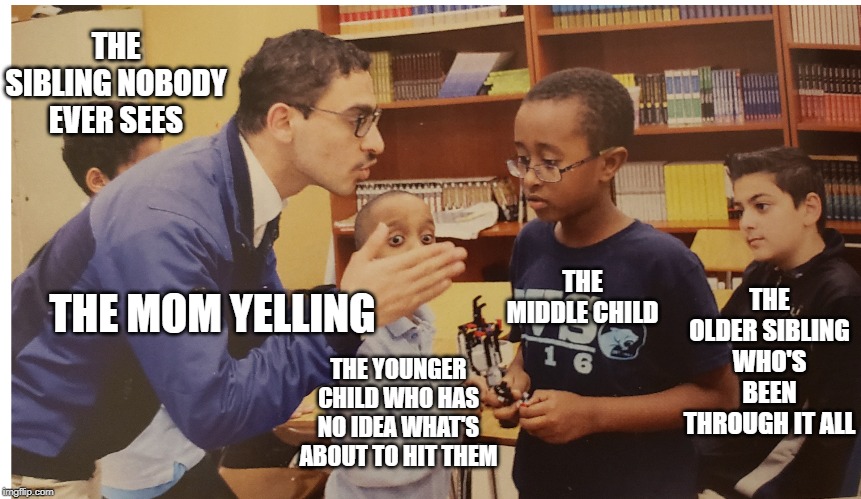

The researchers also coded children’s responses to one another’s humour: no response, positive/neutral, negative, clarification, imitation and extension.įinally, they timed the incidences of humour over the 15 minutes they were under observation. These were: performing incongruities (describing or enacting something that is not what is expected or normal), word play, sound play, banter (gentle teasing), taboo (potty humour) and clowning.

Howe and Paine then developed a coding scheme to capture the different types of humour the children displayed. Some pairs were given a toy village to play with, others a toy train set. The siblings could be younger or older and of the same or opposite gender, but they were relatively close in age. The pair used existing video recordings compiled by a researcher at SUNY Geneseo in western New York State of 86 seven-year-olds playing with their siblings over 15 minutes. Although Howe has been studying childhood behaviour and play her entire career, she says this is the first time she and her colleague have studied children’s use of humour in an organized, systematic way. It is a collaboration with postdoctoral researcher Amy Paine of Cardiff University in the United Kingdom. The study, “ ‘H, I, J, K, L, M, N, O, PEE! Get it? Pee!’: Siblings’ shared humour in childhood,” was published in the British Journal of Developmental Psychology. A new paper co-authored by Nina Howe, professor of education and Concordia University Research Chair in Early Childhood Development and Education, looks to change that by examining how seven-year-olds use humour with their siblings while at play. However, as appealing and fascinating as children’s humour is, it has been remarkably under-studied at the academic level. The chances are good that it will be, at least on some level, very funny.

The next time you’re with a seven-year-old, take a moment to listen to what the child is saying.


 0 kommentar(er)
0 kommentar(er)
